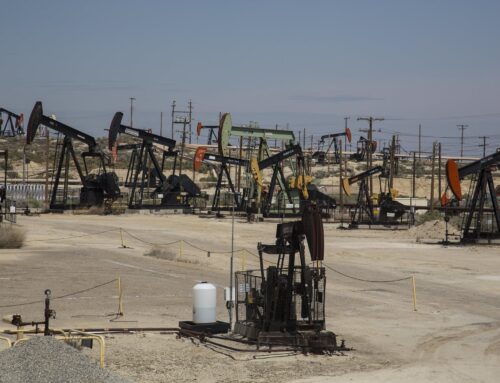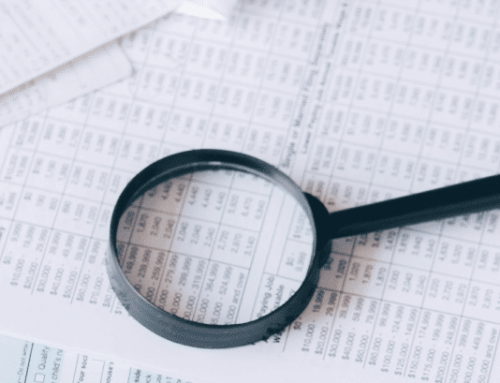Since the late 1970’s, the federal government has funneled billions of dollars into “Clean Coal” technology and programs designed to make the mining and burning of coal less polluting. Unfortunately, funding for clean coal technology has done little more than increase the profits of coal companies. Poorly run and over-funded, clean coal has largely been a waste of taxpayer dollars. Consider the following:
-
 Since 1978, the federal government has invested $2.5 billion on clean coal technology.1 The Energy Policy Act of 2005 included more than $8 billion in subsidies for the coal industry.2 In 2007 alone, the federal government spent $61 million on its Clean Coal Power Initiative, and an additional $54 million on the FutureGen initiative to develop the technology for zero-emissions coal-fired power plants.3
Since 1978, the federal government has invested $2.5 billion on clean coal technology.1 The Energy Policy Act of 2005 included more than $8 billion in subsidies for the coal industry.2 In 2007 alone, the federal government spent $61 million on its Clean Coal Power Initiative, and an additional $54 million on the FutureGen initiative to develop the technology for zero-emissions coal-fired power plants.3
-
The Bush Administration’s Clean Coal Power Initiative, began in 2002, provides $2 billion over 10 years to projects that implement clean coal technologies. The government funds up to fifty percent of the cost of each project.4
-
The Energy Policy Act of 2005 included more than $8 billion in subsidies for the coal industry. This includes the following $4.1 billion in subsidies specifically for clean coal:6,7
- $1.8 billion for the Clean Coal Power Initiative, described above
- Up to $80 million in loans for the Healy Power Plant, a clean coal plant in Alaska
- $425 million for coal-to-liquids demonstration projects at Southern Illinois University, University of Kentucky, and Purdue University
- $90 million for carbon capture research and development, a ten-year project to develop carbon capture technologies for new and existing coal power plants
- $1.68 billion in tax credits for clean coal facilities
The bill also includes an additional $1.1 billion for the Coal and Related Technologies Program, which, among other things, funds research on clean coal technologies and carbon capture and sequestration.
-
Coal companies shouldn’t need the billions of dollars in support they’re getting from the federal government. Peabody Energy, the largest private-sector coal company, posted record revenue in the second quarter of 2008, more than doubling its profits from the same quarter last year.8
-
Private companies can develop these technologies at a lower cost. After spending millions of dollars on Coal Preparation and Environmental Control projects, the government found that these technologies could not compete with other, more efficient techniques developed in private industry. 9
-
Successful clean coal projects were supposed to generate income, and repay the Department of Energy for the original costs. But of the $1.6 Billion invested in clean coal, only $2 million, around a tenth of one percent, has been repaid.10
-
The Government Accountability Office (GAO) has condemned the Clean Coal program as inefficient and a waste of taxpayer dollars. In 2001, the GAO stated: “From a management perspective, we found that many [Clean coal] projects had experienced delays, cost overruns, bankruptcies, and performance problems.”11
-
Of the 13 Clean Coal projects that the GAO examined, six projects were behind schedule by as much as seven years, and two projects were completely bankrupt. Furthermore, of the 50 projects funded under the Clean Coal Technology program, 12 were never finished.12
-
In a 2005 review of the Department of Energy’s clean coal research, the Office of Management and Budget gave them a score of only 33% on “program results/accountability” and noted the Department of Energy’s “lack of evaluation of whether research and development (R&D) programs have been effective in achieving relevant and beneficial outcomes that otherwise would not have occurred without the program intervention.”13
- Clean coal technologies don’t need taxpayer subsidies. The GAO found that many of the Department of Energy’s clean coal projects could have been developed without millions of dollars in federal assistance.14
Congress must stop throwing billions of taxpayer dollars at a program that has been plagued with inefficiencies and mismanagement. Continued funding for the bloated clean coal program will do little to help our nation’s energy future and leave taxpayers paying a hefty price.
For more information, please contact Autumn Hanna at (202) 546-8500 x112 or autumn[at]taxpayer.net
1. EIA: Federal Financial Interventions and Subsidies in Energy Markets 2008
2. Energy Policy Act of 2005 http://thomas.loc.gov
3. EIA: Federal Financial Interventions and Subsidies in Energy Markets 2008.
4. NETL, “Clean Coal Demonstrations”, http://www.netl.doe.gov/technologies/coalpower/cctc/ccpi/index.html, 2008.
5. Public Law 109-58, “Energy Policy Act of 2005”, August 2005.
6. Ibid.
7. TCS Analysis of Energy Policy Act of 2005
8. UPI Energy, “Peabody posts record profits”, July 2008.
9. CRS Report: The Clean Coal Technology Program: Current Prospects (4/6/01)
10. U.S. Department of Energy, Fiscal Year 2003 Budget, February 4, 2002, http://www.whitehouse.gov/omb/budget/fy2003/pdf/bud14.pdf Page: 12
11. GAO: “Lessons Learned in the Clean Coal Technology Program.” (6/12/01)
12. U.S. Department of Energy, Fiscal Year 2003 Budget, February 4, 2002, http://www.whitehouse.gov/omb/budget/fy2003/pdf/bud14.pdf. Page: 12
13. ExpectMore.gov, “Detailed Information on the Coal Energy Technology Assessment”, http://www.whitehouse.gov/omb/expectmore/detail/10000086.2005.html, 2005.
14. GAO: “Lessons Learned in the Clean Coal Technology Program.” (6/12/01)
Picture from http://www.epa.gov/epaoswer/other/fossil/images/trtmnt.jpg










